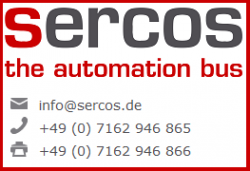Putting a label on the brand experience
How traditional labels are evolving to support new food & drink retailers
According to a recent study by Manhattan Associates, a significant majority of respondents (68.75%) expect food & drink retailers to locate and then deliver products to their home, local store or delivery locker from wherever they are in the supply chain.
For today’s brands, linking up online and offline experiences is not just important, it can make or break their existence. Consumers who were once ‘sold to’ have, using digitalization to their advantage, firmly secured their collective position as the ‘one’ calling the shots.
The need to develop a joined up omnichannel experience is now paramount for food & drink retailers looking to build an authentic brand experience. Dr. Philip Kotler, who is widely regarded as the ‘Father of Modern Marketing’, defines Marketing 4.0 in his latest book as ‘a marketing approach that combines online and offline interaction between companies and customers.’
Dr Kotler goes on to suggest that ‘in the digital economy, digital interaction alone is not sufficient and in fact, in an increasingly online world, offline touch represents a strong differentiation.’ Couple this with the value placed on authenticity – consumer trust in brands is at an all-time low – and it’s not hard to deduce that the time for food & drink brands and retailers to update and streamline their omnichannel processes is now.
But how is the humble label evolving to cater for the new processes that are required to create a successfully omnichannel experience? To answer this, we must explore the distinct advantages labels present through the supply chain and into the store.
Labels for track and trace
If almost 70% of shoppers expect food & drink retailers to locate their products from wherever their location is in the supply chain, there must be a reliable way to track and trace said products to streamline logistics. This is a necessity for established omnichannel retailers but particularly relevant when catering for cross-sector mergers between on and offline businesses such as Amazon and Whole Foods or Sainsbury’s and Argos. Labels, from the basic barcode to the RFID tag, cater for this need.
The ability of labels to track and trace items through various scenarios is endless. It’s more than feasible for a customer who chooses to shop online with a high-street retailer to make an additional purchase in-store with the same retailer and return both items to a different store.
The same customer using a staffless store, such as Amazon Go, later that day could browse, purchase and pay for multiple items by scanning their RFID tags and without the assistance of a shop assistant. The label facilitates both of these very different experiences yet is largely inconspicuous to the consumer.
Labels and product standout
The label’s track and trace abilities are arguably its key selling points. However, the need to increase shelf standout in a consumer-driven UK economy has, in recent years, driven growth in the ‘sexing up’ of labels.
Think craft beer, for example. The industry has grown at a remarkable rate over the last five years, resulting in a plethora of multi-coloured products jostling for shelf space. The label has been key to boosting sales for independent beer brands by differentiating their product from competitors.
But has the selling power of the static label stalled in the face of new retail technology tools? The next generation of labels is taking the lead from the use of augmented reality (AR) for the retail environment.
Customers of Australian wine brand, 19 Crimes, can now hold their mobile device up to a physical label in store and watch as the image on the bottle ‘talks’ to them. What could be more engaging, and uniquely authentic, than the brand’s icon telling its story directly to the consumer instore.
Labels and sustainability
There is of course, a trend that goes hand in hand with brand authenticity – the current global megatrend for sustainability. Today’s consumer is unlikely to be wholly satisfied with an outstanding brand experience if it is not rooted in sustainable practices. In fact, they would be very quick to call it out.
It goes without saying, therefore, that the role of the label in 2018 must extend beyond basic functionality to incorporate environmental responsibility. In line with meeting this need, Source Labels has created Utroque™, a patented double-sided label product.
Unique to the Utroque solution, labels are featured on both sides of the release liner, significantly reducing the impact of the release liner on the environment. It’s a staggering statistic to consider that if all labels were supplied on both sides of a release liner it would save enough backing liner to wrap around the earth over 1000 times each year.
Putting a label on the brand experience
The role of the label has never been more critical to helping food & drink brands and retailers meet the challenges of creating an omnichannel experience for the consumer. Next generation labels give the ability to track and trace products through various scenarios, make a product stand out on shelf and even contribute to reducing a product’s carbon footprint. Meanwhile, the consumer barely acknowledges the label’s presence, never thinking about the journey it may have helped a product on before it reaches their hands.
Will the label retain an integral role in modern retailing, while remaining somewhat of an unsung hero? We expect so, but we’re pretty sure the modest label wouldn’t have it any other way.






























